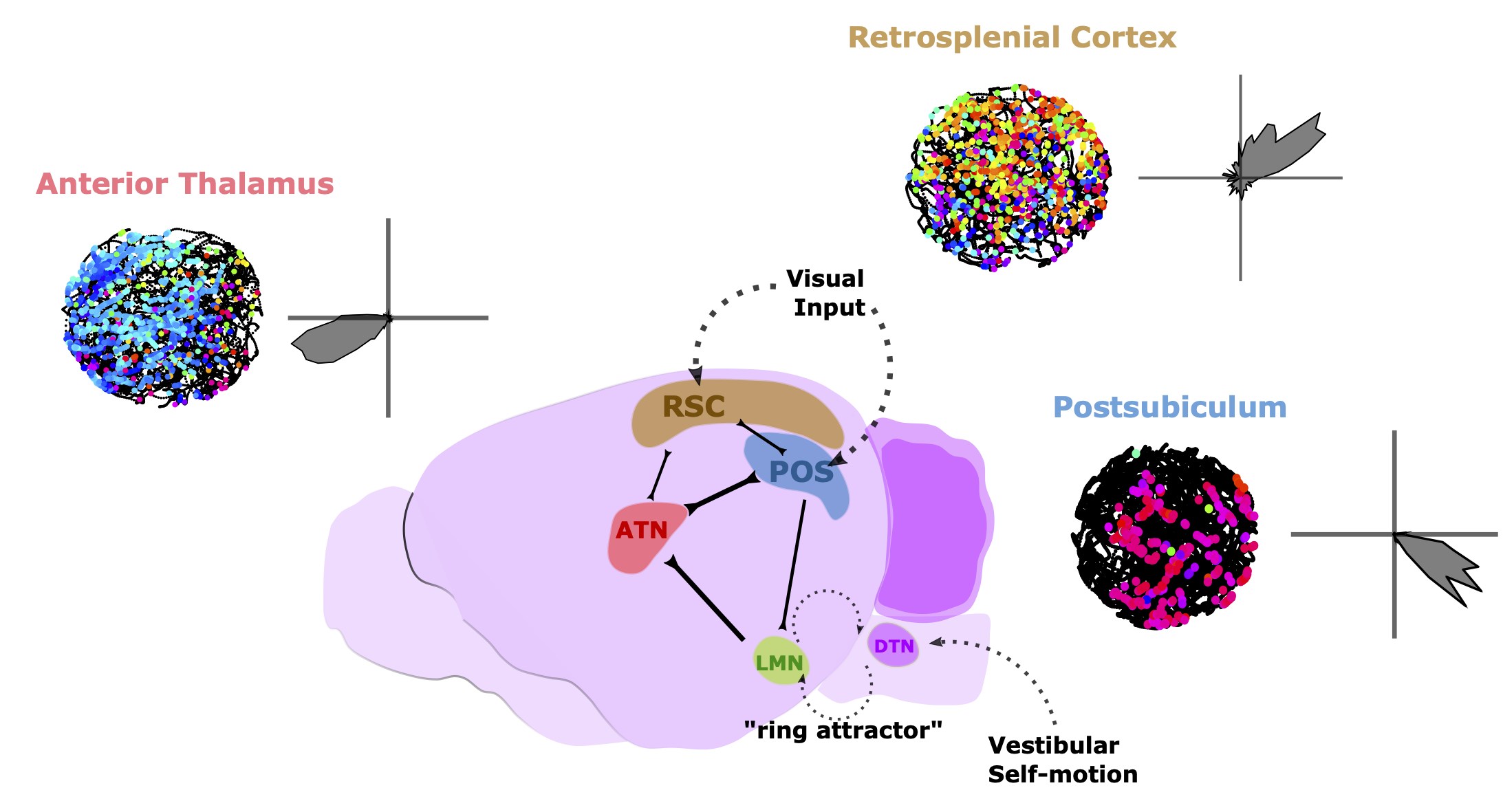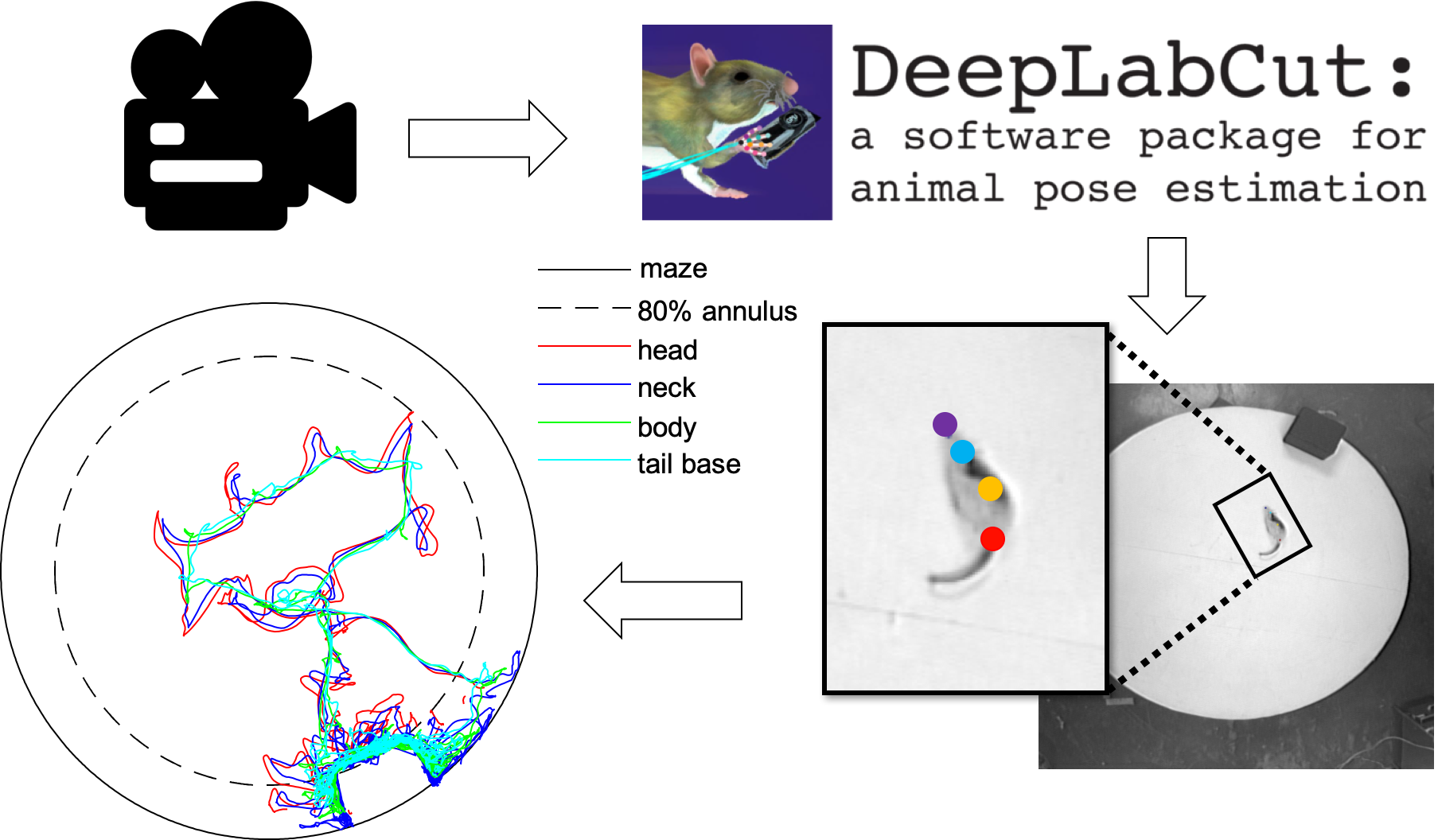Hello and welcome
Hello! I’m a postdoctoral associate in the Schaffer-Nishimura lab at Cornell University.
Contact Email | Twitter | Github
Research Interests
I study the neural circuity that supports spatial navigation and orientation, and how these circuits are altered by neurodegenerative processes. What fascinates me most about this topic is how internally generated senses, such as self-motion or head translation, interact with external sensory inputs, such as vision, to create stable representations of position within an environment. I use detailed behavioral analysis and in-vivo electrophysiological techniques to answer questions surrounding 1.) How animals interact with prominent environmental cues during spatial navigation or exploration and 2.) How the firing dynamics of populations of neurons change as a function of the environment or across time.
Electrophysiology
Head direction (HD) cells, shown below, are sometimes described as a neural compass. These cells fire maximally when the head is oriented in a given direction. The plots below show HD cells recorded from rats foraging in an open field. The colored dots represent the location the cell fired color-coded by the animal’s head direction, while the polar plots (grey) show firing rate as a function of head direction. HD cells are thought to support spatial navigation by providing a neural basis of direction.

Animal Behavior
Navigation requires knowledge of both environmental landmarks and an animal’s current position. Animal movements can reveal critical information about the state of an animal that is navigating an environment. Below depicts a rat’s path while exploring an open field with a local cue. While the rat tended to stay near the local cue, the path in the middle of the field shows head sweeping of the environment. This type of information, along with other features obtained from animal tracking, is critical for understanding spatial navigation.

